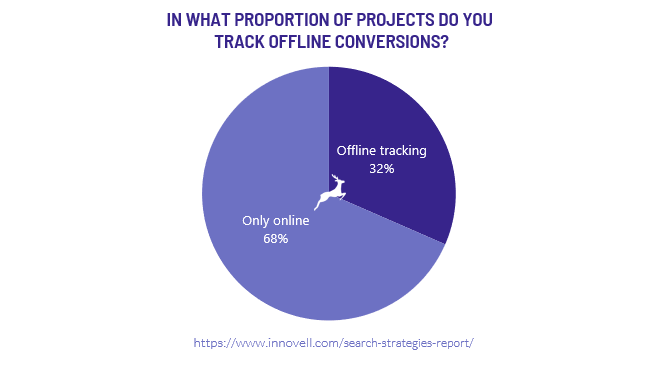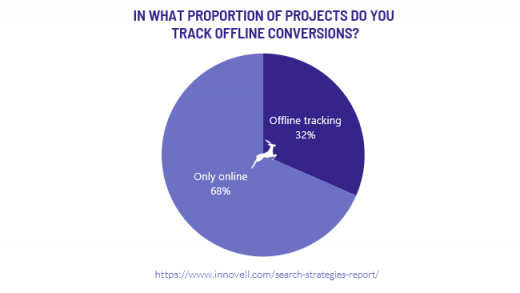The time has come to optimize for IRLs rather than URLs
Drive-to-store strategies have reached a tipping point where they can play a significant role in improving performance of online marketing due to more reliable tracking methods.
Sometimes we have this fight in our minds between reason and data. Should I trust my gut feeling or should I trust the data? Back when I was running an agency, I would often be the one to present the side of the data and I could observe that mental struggle on the face of a client or a prospect trying to align his or her world view with what the data presented. We shouldn’t blindly trust the data which has problems of incompleteness and unreliability. But we should never reject what the data says either.
The good news in 2019 is that data relating to offline activity – things you do without a screen – is becoming actionable enough to fuel dedicated strategies rather than just side-projects or proofs of concept.
Store-visits tracking have become more reliable
At the core of this change lies the improvement in tracking mechanisms. It looks like the “store-visits” tracking from Google and Facebook has become more reliable in several contexts. The precision and reliability of this type of tracking depend on the capability to precisely track ones geographical position via GPS and wifi.
The level of precision is dependent on several factors like the geographical location, user behavior (logged in?) and technology (sophistication of devices) in each case. From one country to another, the level of precision could be radically different and there are a lot of potential error factors. Clearly, it makes a difference to know whether a user has been inside your specific point of sale, outside your point of sale or next door at a competitor’s shop. A difference of one meter (three feet) makes for an entirely different interpretation of user behavior.
Leading teams have started doing this
In our research for the Search Strategy report, we asked the participating teams (shortlisted teams in search awards around the globe), to what extent they took offline data into account in the projects they managed. They declared using tracking of offline activities in almost 1/3 of their projects. Although perhaps several projects are not meant to generate an offline impact, there seems to be a huge untapped potential for better data collection on the impact of digital campaigns. Additionally, if the adoption rate of offline tracking is 32% among the leading teams in paid search, we should expect the rate to be much lower in the broader population of search marketers. There is ample opportunity!

Research Online Purchase Offline
ROPO is when we do online research for a purchase but end up buying the product in a physical store. We do this for a number of reasons: trust, need to touch, delivery place and delay. When we do ROPO, it is almost impossible to track our full user journey as we change “channel” and “device.” One minute our touch point comes from a desktop computer, the next from a smartphone and in the end, we physically touch the product with our hands and the tracking chain is definitively broken.
One of the teams in our survey, award-winning digital marketing agency Wolfgang digital, used a sophisticated method to measure the effect of ROPO for one of their clients. It involved the use of digital receipts after a purchase allowing them to reconcile data from campaign-driven ROPO. The main learning was that for every dollar being spent online, there was another $6 spent offline after a user visited the site. Knowing that the value of their digital campaign was significantly higher than they could measure online, they could now redistribute an additional part of the overall budget to online channels. The change is significant!
What is becoming mainstream is a simpler approach. One in which the data is not as complete as the example we gave, but on the other hand, it is available in real time. Campaigns will, therefore, aim to drive people to the point of sale, and it is this visit to the store which is the data-point we optimize against. Hence the name drive-to-store strategy. We can then only assume or retroactively estimate sales outcome from the store visits.
What does a drive-to-store strategy look like?
In a simplified manner, a drive-to-store strategy can be summarized in the following points:
- Geographic definition of the points of sale
- Definition of catchment areas for each point of sale
- Set-up of specific tracking for store-visits
- Update campaigns with location extensions, multi-layered radius targeting, maps campaigns and other geotargeting
- Ongoing optimization of campaigns against the flows of visitors in the points of sale
- Position-based reporting
Increasing store visits by 50%
In the report, we illustrate the drive-to-store strategy with an award-winning case study from MediaCom Worldwide and Bose who established an ambitious strategy to generate measurable and quantifiable offline actions based on digital campaigns.
Bose increased visits to their store originating from digital campaigns by 50% and the revenue generated from these actions increased by 56% driving significant amounts of incremental sales. This was achieved by implementing a full-scale drive-to-store strategy in which always-on campaigns were enhanced with location information and extensions and a Promoted Places beta allowed them to place ads on Google maps to flag and promote Bose stores.
The age of IRL has arrived
We are at a turning point. It is time to exit our online boxes and start optimizing campaigns for what happens In Real Life rather than to actions that happen on specific URLs. Offline data has become available for online optimization. We can’t yet access transaction data in real time, and it is, therefore, impossible to optimize to value. However, we have taken a major step into solving the offline-online equation in that we can now measure traffic flows in physical locations and optimize to that dimension. It is a major break-through and a major competitive advantage as illustrated by Bose’s 50% increase in store-visits. If you are click-and-mortar and not already in that game, you need to move now. Learn from the data and trust your guts when you see the story they tell.
Opinions expressed in this article are those of the guest author and not necessarily Marketing Land. Staff authors are listed here.
Marketing Land – Internet Marketing News, Strategies & Tips
(10)



